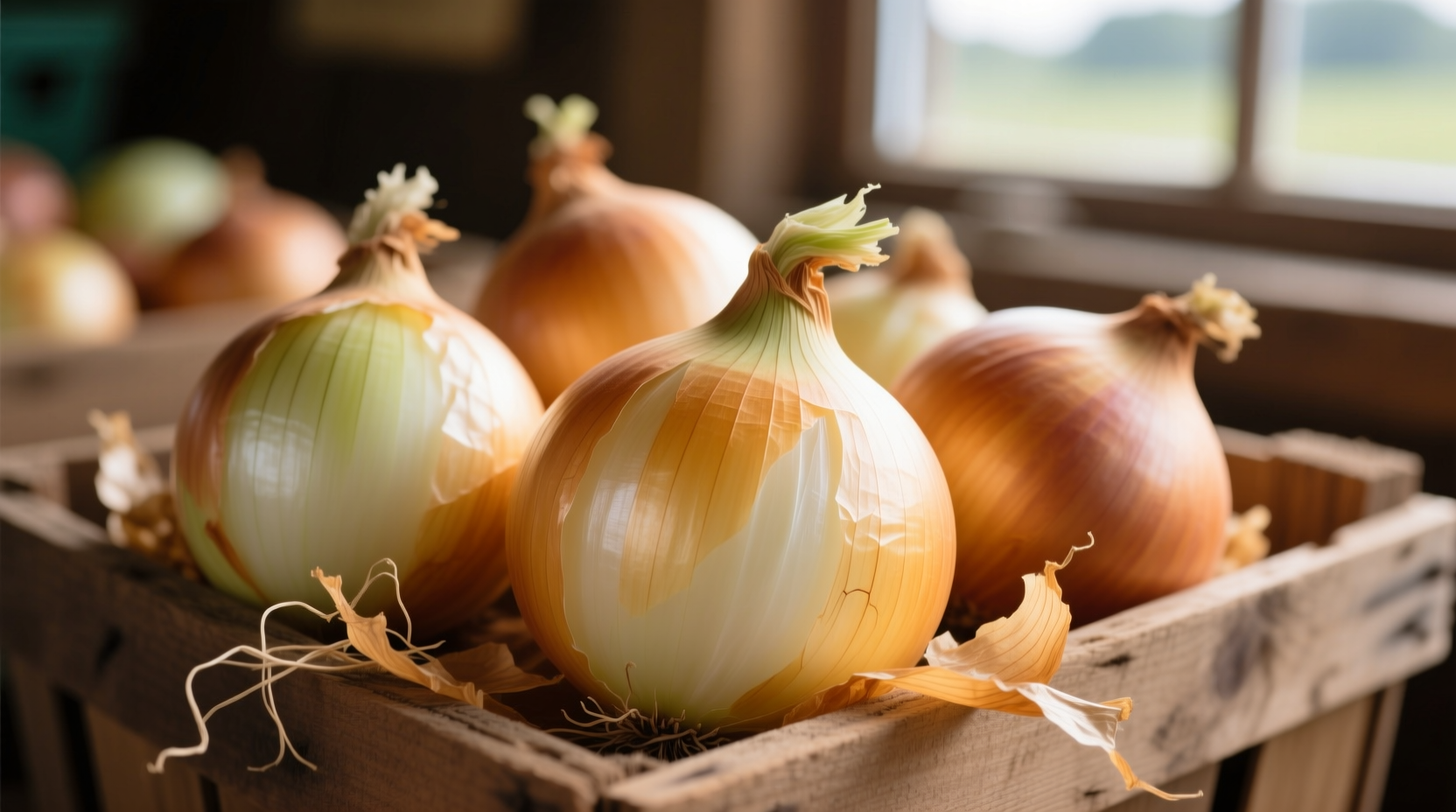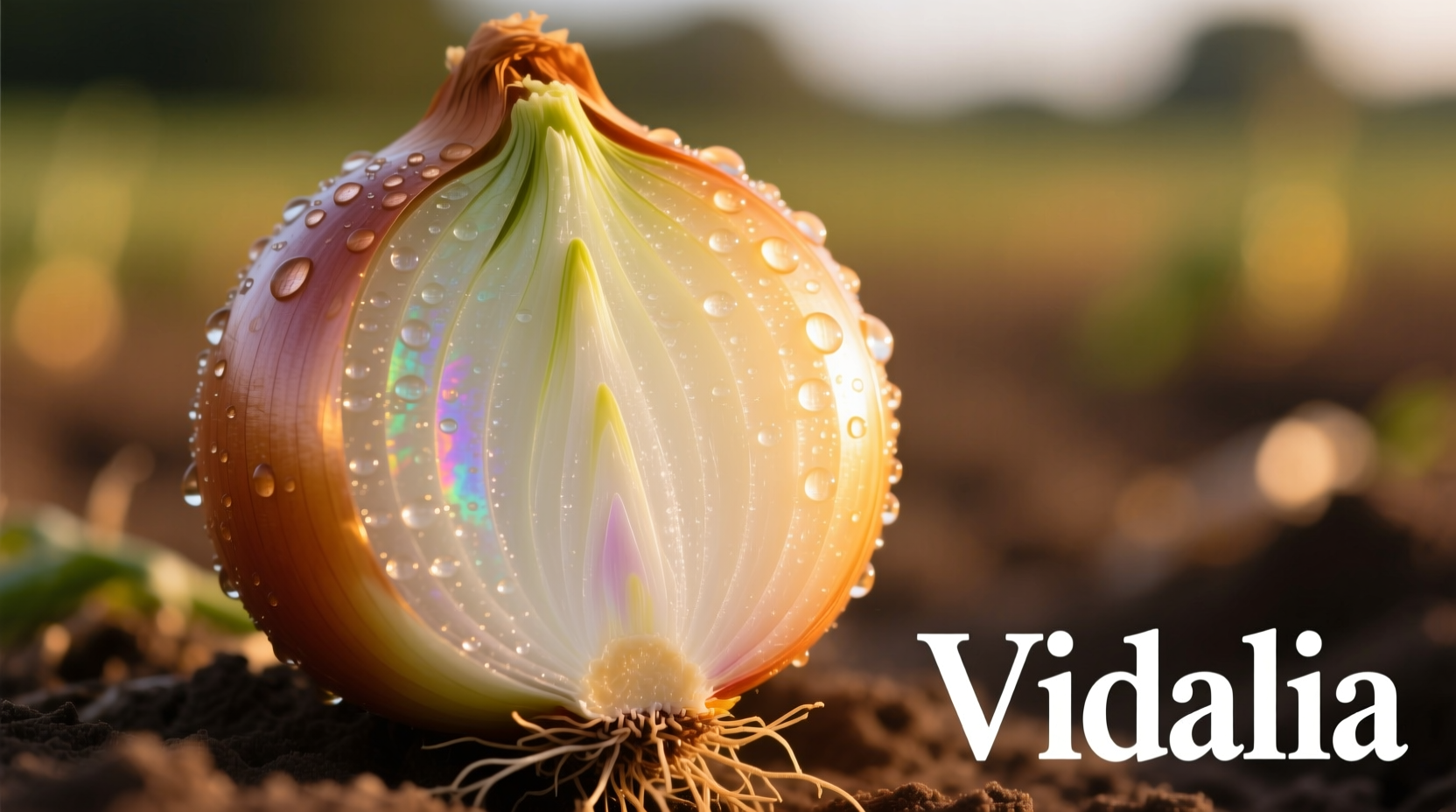What Makes Vidalia Onions Truly Special
When you bite into a Vidalia onion, you're experiencing a unique agricultural product protected by both federal law and geographical indication. Unlike generic "sweet onions" found year-round, authentic Vidalias can only come from 20 specific counties in Georgia where the low-sulfur soil creates their distinctive mild flavor profile. The Vidalia Onion Act of 1986 and subsequent USDA marketing agreements ensure that only onions meeting strict criteria can bear the Vidalia name.
| Characteristic | Vidalia Onions | Regular Yellow Onions |
|---|---|---|
| Sulfur Content | Very low (0.12% or less) | Higher (0.30% or more) |
| Pyruvate Level | 6.0 or less (sweetness indicator) | 9.0 or higher (pungency indicator) |
| Peak Season | April 15 - September 1 | Available year-round |
| Geographical Origin | 20 specific Georgia counties only | No restrictions |
The Science Behind the Sweetness
The magic of Vidalia onions happens in the soil. Georgia's unique combination of sandy, low-sulfur soil in the southeastern part of the state prevents the onions from developing the pungent compounds found in other varieties. According to research from the University of Georgia College of Agricultural and Environmental Sciences, sulfur is directly responsible for the sharp, eye-watering compounds in onions. With less sulfur available in the soil, Vidalias produce significantly fewer of these compounds, resulting in their characteristic sweetness.

How to Identify Authentic Vidalia Onions
Not all sweet onions are genuine Vidalias. The Vidalia Onion Committee requires all certified Vidalias to display specific branding:
- Official Vidalia logo with the registered trademark symbol
- "Grown in Georgia" designation
- Proper packaging indicating the grower and packer
Be wary of "Vidalia-style" onions sold outside the official season (April-September) or without proper branding. The committee's strict enforcement ensures that only onions meeting quality standards can use the name. You can verify authenticity by checking the official Vidalia Onion Committee website.
Vidalia Onion Season Timeline
Understanding the Vidalia calendar helps you get the freshest product:
- March: Planting begins in Georgia's designated Vidalia region
- April 15: Official start of the Vidalia season
- May-June: Peak harvest period with maximum sweetness
- July-August: Later harvest with slightly stronger flavor
- September 1: Official end of the fresh Vidalia season
- September-April: Only stored or processed Vidalias available
According to USDA agricultural reports, the Vidalia harvest window has remained consistent since the 1980s, though climate variations can shift peak quality by 1-2 weeks annually.
When Vidalias Shine (and When They Don't)
Vidalia onions excel in specific applications but aren't always the best choice:
Perfect For:
- Raw applications like salads, sandwiches, and salsas
- Caramelizing (they develop beautiful golden color faster)
- Onion rings (their mild flavor appeals to children)
- Fresh salsas and relishes
Not Ideal For:
- Long-simmered soups and stews (they break down too quickly)
- Recipes requiring sharp onion flavor
- When cost is a primary concern (they're typically more expensive)
Proper Storage Techniques for Maximum Freshness
How you store Vidalias dramatically affects their shelf life:
- Keep them in a cool, dark, dry place with good air circulation
- Never refrigerate whole Vidalias (causes moisture buildup)
- Store in mesh bags or single layers on shelves
- Expect 2-3 weeks of freshness when stored properly
- Once cut, wrap tightly and refrigerate for up to 7 days
Unlike regular onions, Vidalias have thinner skins and higher water content, making them more perishable. The University of Georgia's post-harvest research shows that temperatures above 75°F significantly reduce Vidalia shelf life.
Common Questions About Vidalia Onions
Are Vidalia onions and sweet onions the same thing?
No, while all Vidalias are sweet onions, not all sweet onions are Vidalias. Vidalias are a specific variety grown only in designated Georgia counties under strict regulations. Other sweet onions like Walla Walla or Maui can be grown anywhere and don't have the same legal protections or consistent flavor profile.
Why are Vidalia onions so expensive compared to regular onions?
Vidalias command higher prices due to their limited growing region, strict quality controls, seasonal availability, and higher production costs. The specialized low-sulfur soil required restricts where they can be grown, creating natural supply constraints that affect pricing.
Can I substitute Vidalia onions in recipes that call for regular onions?
Yes, but with adjustments. Vidalias have higher water content and less pungency, so you may need to use more for equivalent flavor impact. When cooking, add them later in the process since they caramelize faster. For raw applications, they can be used 1:1 as a direct substitute.
How can I tell if a Vidalia onion has gone bad?
Signs of spoilage include soft spots, mold growth, dark patches, or an off smell. Unlike regular onions, Vidalias should feel firm with dry, papery skin. If they become slimy, develop black spots, or emit a sour odor, they should be discarded immediately.











 浙公网安备
33010002000092号
浙公网安备
33010002000092号 浙B2-20120091-4
浙B2-20120091-4